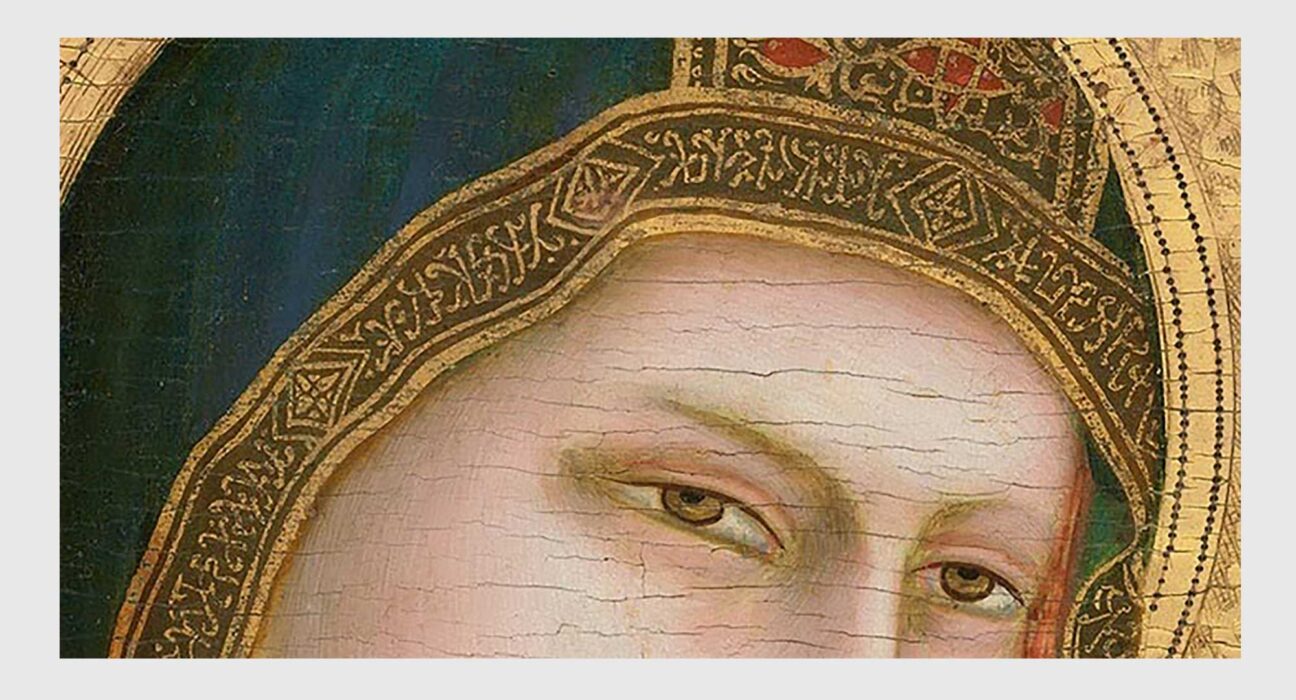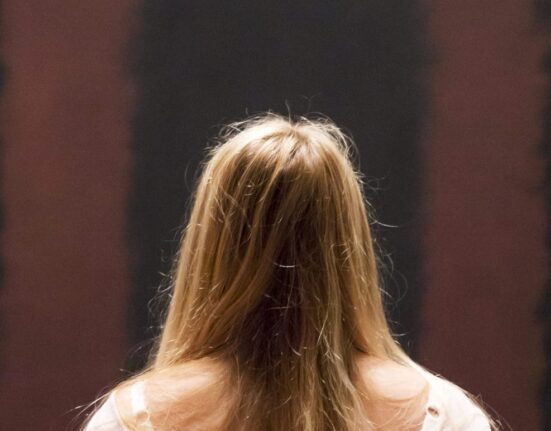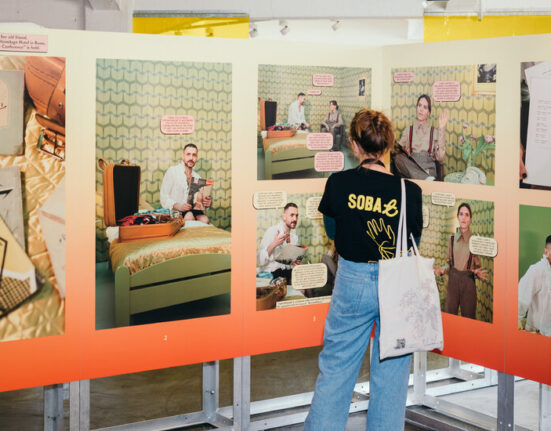In Europe, during the Middle Ages and the Renaissance, European artists had a very strong interest in portraying Biblical accounts. Naturally, as most of these biblical anecdotes and figures relating to Christianity, Europe’s dominant faith during the medieval times, occurred in the Holy Land, artists from the continent, while many of their inscriptions were legible texts in Latin, looked to incorporate languages from the Holy Land. Consequently, they looked to Arabic for inspiration. But there was a problem: Prior to the 16th century, very few Europeans knew Arabic, including the artists themselves. To curb this obstacle, these painters used fake Arabic.
Arabic in European sacred art
From the early 14th century onwards, this arabesque gibberish was a recurrent feature of Italian paintings. Artists sought to reproduce the shapes of Arabic characters, without necessarily understanding their meaning. This style of ornamentation is known to art historians as pseudo-Arabic or pseudo-kufic, although the latter term is not entirely accurate, since the script produced by European artists more closely resembles curved thuluth script than angular kufic script.
Pseudo-Arabic was commonly incorporated into religious images, often appearing as inscribed bands on the hem of garments or in the halos of holy figures. These conventions likely derived from actual Islamic artworks, where rulers and important individuals wore special robes with embroidered bands of text called “tiraz.”

Adoration of the Magi, 1423, Uffizi Gallery, Florence.
European artists adopted these elements especially in depictions of the Virgin Mary, to signify the wearer’s elevated status, emulating the caliphs and their entourage. Interestingly, these garments included Islamic religious inscriptions that did not appear to be a concern for the artists.
A failed attempt at biblical exactitude
The inspiration for European artists’ fascination with Arabic may have arisen from a mistaken belief that Arabic was the language of early Christianity. Although they were aware that Christianity and the Bible originated in the Middle East, the details were hazy. For instance, the Knights Templar believed that the Dome of the Rock in Jerusalem was the Biblical Temple of Solomon, not knowing that it was built by the Umayyad caliph Abd al-Malik ibn Marwan in the 7th century CE and featured Arabic inscriptions inside. Furthermore, the influence of imported luxury goods from the Islamic world, such as textiles, glass, metals, and ceramics, played a role in late medieval and Renaissance European culture.

Madonna of Humility (c. 1415-1416). Museo Nazionale di San Matteo, Pisa, Italy
Although this tradition reached its peak with Italian painters, it began much earlier. The practice of imitating numerous scripts of Arabic dates back to the 8th century when King Offa of England produced gold coins resembling Islamic dinars, though with numerous errors due to a lack of understanding of Arabic. Similar imitations of Arabic coins, called tari, were widespread in medieval southern Italy.






